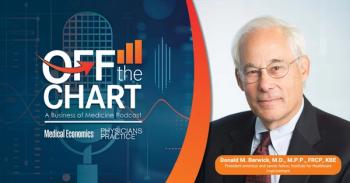
How to Transform Your Physician Practice to Accommodate Changes
Physicians must transform their business models from merely being service providers. Why being complacent is your worst option.
Charles Darwin’s work is popularly summarized as the survival of the fittest. His broader theory of evolution is much more aptly defined as the elimination of those who fail to adapt to a changing environment.
Today’s healthcare delivery environment is changing profoundly, and rapidly.
Adaptation will be required. Here are the basics:
1. The Affordable Care Act is forcing payers into reevaluating their provider relationships;
2. Commercial health plans have historically benefited under fee-for-service reimbursement models, as have physicians and other healthcare providers.
3. Medicare and Medicaid are foundering under fee for service, and health care providers, particularly physicians, will bear the brunt of their need to stem costs through lower FFS reimbursements. This is, after all, the only leverage that government payers have to control healthcare costs.
4. Fee for service will soon be a thing of the past. Value-based reimbursement models such as bundled payments, episode-based capitation, and other forms of provider risk are the future and a necessity to be competitive for most, and to survive for the rest;
5. In response, physicians must transform their business models from merely being service providers into being population managers, leading care teams under value-based contracts;
6. We believe that payer’s natural allies are physicians. We also believe that they already realize that.
7. We believe that in order to bend the cost curve, payers will need to align with providers who do not directly benefit from the production of high-cost services.
Care delivery will transform as physicians transform from service providers to managers of population health. There will be a progression in scope and sophistication over several iterations to a more fully comprehensive accountable care model. From initial management of the majority of common healthcare events and disease prevalence in attributed populations and to share in the savings the program has achieved, the program’s goal is ultimate assignment of more global up and down side population risk. We envision a step-wise evolution of this payer-provider network collaboration as trust and capabilities are built into high-quality, affordable health care while the best include patient/member loyalty and grow their share of covered lives.
Patient/member compliance and greater patient satisfaction must grow from new cultural norms established, embedded, and reinforced within physician practices that promote patient-centric care through patient/member engagement, shared decision making in care planning, access to the care team, and clinical compatibility enabled by new, clinically focused communication channels.
While we believe that care coordination is critical, surrounding the patient/member in a concerned and caring environment where exceeding patient expectations and peer group performance will be the sine qua non of building the stickiness and patient loyalty that will create and sustain success.
These are broad strokes and there are hundreds of details.
There is no easy fix and no software program that can promise success without cultural and operational practice reform to maximize its benefit.
It will take investment, coordinated and integrated physician networks where everyone is on the same clinical page, cutting waste throughout the continuum of care, disease and risk stratification capabilities, performance measurement, sophisticated communication techniques and science and, most importantly, physicians partnering with a new breed of managers and administrators with the right plan, who understand what to do, and know how to do it.
The good news is that those people exist, and will be coming to market soon partnering with payers and providers alike.
The hardest part will be picking the ones that can get the job done. They will not be the ones with quick fixes and painless plans. They will insist on transformation, and it will empower you in ways you do not think possible.
Newsletter
Optimize your practice with the Physicians Practice newsletter, offering management pearls, leadership tips, and business strategies tailored for practice administrators and physicians of any specialty.








